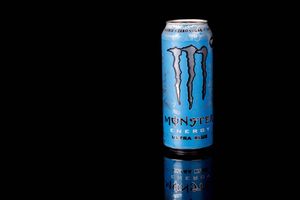Second Regulatory Approval for BRUKINSA in Israel
BeiGene (NASDAQ: BGNE; HKEX: 06160, SSE: 688235), a global, science-driven biotechnology company focused on developing innovative and affordable medicines to improve treatment outcomes and access for patients worldwide, and Medison Pharma Ltd. a global pharma company focused on providing access to highly innovative therapies to patients in international markets ("Medison"), today announced that the State of Israel Ministry of Health has approved BRUKINSA® (zanubrutinib) for the treatment of adult patients with Waldenström’s Macroglobulinemia (WM). BRUKINSA is reimbursed nationally for patients with second- or third-line WM. This is the second approval for BRUKINSA in Israel, following its initial marketing and reimbursement approval in 2021 for patients with mantle cell lymphoma (MCL) who have received at least one prior therapy.
“We are delighted that patients with WM in Israel will now have access to BRUKINSA, a potentially best-in-class BTK inhibitor. We are committed to expanding access to high-impact medicines on behalf of the patients who need them, all over the world. With two approvals and reimbursement coverage in Israel, we are working with Medison Pharma to bring BRUKINSA to the patients in Israel who need it,” commented Itzik Mizrahi, General Manager of Israel, at BeiGene.
The recommended dose of BRUKINSA is either 160 mg twice daily or 320 mg once daily, taken orally with or without food. The dose may be adjusted for adverse reactions and reduced for patients with severe hepatic impairment and certain drug interactions.
About Waldenström’s Macroglobulinemia
WM is a rare B-cell lymphoma that occurs in less than two percent of patients with non-Hodgkin lymphomasi. The disease usually affects older adults and is primarily found in bone marrow, although lymph nodes and the spleen may be involved.ii Typically, patients present between the ages of 60 and 70. For reasons that are unclear, WM is almost twice as common in men as in women and is more common in Caucasians than other ethnic groups.iii Waldenström macroglobulinemia is a rare cancer seen only in approximately three to five per million people per year.iii
About BRUKINSA
BRUKINSA is a small molecule inhibitor of Bruton’s tyrosine kinase (BTK) discovered by BeiGene scientists that is currently being evaluated globally in a broad clinical program as a monotherapy and in combination with other therapies to treat various B-cell malignancies. Because new BTK is continuously synthesized, BRUKINSA was specifically designed to deliver complete and sustained inhibition of the BTK protein by optimizing bioavailability, half-life, and selectivity. With differentiated pharmacokinetics compared to other approved BTK inhibitors, BRUKINSA has been demonstrated to inhibit the proliferation of malignant B cells within a number of disease relevant tissues.
To date, BRUKINSA has received more than 20 approvals covering more than 40 countries and regions, including the United States, China, the EU and Great Britain, Canada, Australia, and additional international markets. Currently, more than 40 additional regulatory submissions are in review around the world.
IMPORTANT U.S. SAFETY INFORMATION FOR BRUKINSA (ZANUBRUTINIB)
Warnings and Precautions
Hemorrhage
Fatal and serious hemorrhagic events have occurred in patients with hematological malignancies treated with BRUKINSA monotherapy. Grade 3 or higher hemorrhage including intracranial and gastrointestinal hemorrhage, hematuria and hemothorax have been reported in 3.4% of patients treated with BRUKINSA monotherapy. Hemorrhage events of any grade occurred in 35% of patients treated with BRUKINSA monotherapy.
Bleeding events have occurred in patients with and without concomitant antiplatelet or anticoagulation therapy. Co-administration of BRUKINSA with antiplatelet or anticoagulant medications may further increase the risk of hemorrhage.
Monitor for signs and symptoms of bleeding. Discontinue BRUKINSA if intracranial hemorrhage of any grade occurs. Consider the benefit-risk of withholding BRUKINSA for 3-7 days pre- and post-surgery depending upon the type of surgery and the risk of bleeding.
Infections
Fatal and serious infections (including bacterial, viral, or fungal) and opportunistic infections have occurred in patients with hematological malignancies treated with BRUKINSA monotherapy. Grade 3 or higher infections occurred in 27% of patients, most commonly pneumonia. Infections due to hepatitis B virus (HBV) reactivation have occurred.
Consider prophylaxis for herpes simplex virus, pneumocystis jiroveci pneumonia and other infections according to standard of care in patients who are at increased risk for infections. Monitor and evaluate patients for fever or other signs and symptoms of infection and treat appropriately.
Cytopenias
Grade 3 or 4 cytopenias, including neutropenia (26%), thrombocytopenia (11%) and anemia (8%) based on laboratory measurements, developed in patients treated with BRUKINSA monotherapy. Grade 4 neutropenia occurred in 13% of patients, and Grade 4 thrombocytopenia occurred in 3.6% of patients.
Monitor complete blood counts regularly during treatment and interrupt treatment, reduce the dose, or discontinue treatment as warranted. Treat using growth factor or transfusions, as needed.
Second Primary Malignancies
Second primary malignancies, including non-skin carcinoma, have occurred in 14% of patients treated with BRUKINSA monotherapy. The most frequent second primary malignancy was non-melanoma skin cancer, reported in 8% of patients. Other second primary malignancies included malignant solid tumors (4.0%), melanoma (1.7%) and hematologic malignancies (1.2%). Advise patients to use sun protection and monitor patients for the development of second primary malignancies.
Cardiac Arrhythmias
Atrial fibrillation and atrial flutter were reported in 3.2% of patients treated with BRUKINSA monotherapy. Patients with cardiac risk factors, hypertension, and acute infections may be at increased risk. Grade 3 or higher events were reported in 1.1% of patients treated with BRUKINSA monotherapy. Monitor signs and symptoms for atrial fibrillation and atrial flutter and manage as appropriate.
Embryo-Fetal Toxicity
Based on findings in animals, BRUKINSA can cause fetal harm when administered to a pregnant woman. Administration of zanubrutinib to pregnant rats during the period of organogenesis caused embryo-fetal toxicity including malformations at exposures that were 5 times higher than those reported in patients at the recommended dose of 160 mg twice daily. Advise women to avoid becoming pregnant while taking BRUKINSA and for 1 week after the last dose. Advise men to avoid fathering a child during treatment and for 1 week after the last dose.
If this drug is used during pregnancy, or if the patient becomes pregnant while taking this drug, the patient should be apprised of the potential hazard to a fetus.
Adverse reactions
The most common adverse reactions, including laboratory abnormalities, in ≥ 30% of patients who received BRUKINSA (N = 847) included decreased neutrophil count (54%), upper respiratory tract infection (47%), decreased platelet count (41%), hemorrhage (35%), decreased lymphocyte count (31%), rash (31%) and musculoskeletal pain (30%).
Drug Interactions
CYP3A Inhibitors: When BRUKINSA is co-administered with a strong CYP3A inhibitor, reduce BRUKINSA dose to 80 mg once daily. For coadministration with a moderate CYP3A inhibitor, reduce BRUKINSA dose to 80 mg twice daily.
CYP3A Inducers: Avoid coadministration with moderate or strong CYP3A inducers.
Specific Populations
Hepatic Impairment: The recommended dose of BRUKINSA for patients with severe hepatic impairment is 80 mg orally twice daily.
Please see full U.S. Prescribing Information at www.beigene.com/PDF/BRUKINSAUSPI.pdf and Patient Information at www.beigene.com/PDF/BRUKINSAUSPPI.pdf.
BeiGene Oncology
BeiGene is committed to advancing best- and first-in-class clinical candidates internally or with like-minded partners to develop impactful and affordable medicines for patients across the globe. We have a growing R&D and medical affairs team of approximately 2,900 colleagues dedicated to advancing more than 100 clinical trials that have involved more than 14,500 subjects. Our expansive portfolio is directed predominantly by our internal colleagues supporting clinical trials in more than 45 countries and regions. Hematology-oncology and solid tumor targeted therapies and immuno-oncology are key focus areas for the Company, with both mono- and combination therapies prioritized in our research and development. BeiGene currently has three approved medicines discovered and developed in our own labs: BTK inhibitor BRUKINSA in the United States, China, the EU and Great Britain, Canada, Australia and additional international markets; and the non-FC-gamma receptor binding anti-PD-1 antibody tislelizumab as well as the PARP inhibitor pamiparib in China.
BeiGene also partners with innovative companies who share our goal of developing therapies to address global health needs. We commercialize a range of oncology medicines in China licensed from Amgen, Bristol Myers Squibb, EUSA Pharma and Bio-Thera. We also plan to address greater areas of unmet need globally through our other collaborations including with Mirati Therapeutics, Seagen, and Zymeworks.
In January 2021 BeiGene and Novartis announced a collaboration granting Novartis rights to co-develop, manufacture, and commercialize BeiGene’s anti-PD1 antibody tislelizumab in North America, Europe, and Japan. Building upon this productive collaboration, including a biologics license application (BLA) under FDA review, BeiGene and Novartis announced two new agreements in December 2021 granting Novartis an option to co-develop, manufacture, and commercialize BeiGene’s TIGIT inhibitor ociperlimab that is in Phase 3 development and adding five approved Novartis oncology products to the BeiGene product portfolio across designated regions of China.
About BeiGene
BeiGene is a global, science-driven biotechnology company focused on developing innovative and affordable medicines to improve treatment outcomes and access for patients worldwide. With a broad portfolio of more than 40 clinical candidates, we are expediting development of our diverse pipeline of novel therapeutics through our own capabilities and collaborations. We are committed to radically improving access to medicines for two billion more people by 2030. BeiGene has a growing global team of over 8,000 colleagues across five continents. To learn more about BeiGene, please visit www.beigene.com and follow us on Twitter at @BeiGeneGlobal.
About Medison
Medison is a global pharma company focused on providing access to highly innovative therapies to patients in international markets.
Medison is the first to create an international commercialization platform for highly innovative therapies, helping to save and improve lives by making the best available novel treatments accessible to patients in international markets.
Medison has a track record of multi-territorial partnerships with leading pharmaceutical and biotech companies seeking to expand their global reach.
To learn more visit www.medisonpharma.com.
Forward-Looking Statements
This press release contains forward-looking statements within the meaning of the Private Securities Litigation Reform Act of 1995 and other federal securities laws, including statements regarding plans for development and commercialization of BRUKINSA in Israel, the potential commercial opportunity for BRUKINSA, plans for making BRUKINSA accessible to patients in Israel, the potential for BRUKINSA to be a best-in-class BTK inhibitor and to provide improved clinical benefits to patients, and BeiGene’s plans, commitments, aspirations and goals under the headings “BeiGene Oncology” and “About BeiGene”. Actual results may differ materially from those indicated in the forward-looking statements as a result of various important factors, including BeiGene's ability to demonstrate the efficacy and safety of its drug candidates; the clinical results for its drug candidates, which may not support further development or marketing approval; actions of regulatory agencies, which may affect the initiation, timing and progress of clinical trials and marketing approval; BeiGene's ability to achieve commercial success for its marketed medicines and drug candidates, if approved; BeiGene's ability to obtain and maintain protection of intellectual property for its medicines and technology; BeiGene's reliance on third parties to conduct drug development, manufacturing and other services; BeiGene’s limited experience in obtaining regulatory approvals and commercializing pharmaceutical products and its ability to obtain additional funding for operations and to complete the development of its drug candidates and achieve and maintain profitability; the impact of the COVID-19 pandemic on BeiGene’s clinical development, regulatory, commercial, manufacturing, and other operations, as well as those risks more fully discussed in the section entitled “Risk Factors” in BeiGene’s most recent annual report on Form 10-K as well as discussions of potential risks, uncertainties, and other important factors in BeiGene's subsequent filings with the U.S. Securities and Exchange Commission. All information in this press release is as of the date of this press release, and BeiGene undertakes no duty to update such information unless required by law.
_________________________
i Buske, C, et al. Treatment and outcome patterns in European patients with Waldenström’s macroglobulinaemia: a large, observational, retrospective chart review. The Lancet Haematology 2018; 5: e0299-309.
ii Lymphoma Research Foundation. Getting the Facts: Waldenström Macroglobulinemia. Accessed March 2022. Available at https://lymphoma.org/wp-content/uploads/2021/12/LRF-Waldenstrom-Macroglobulinemia_Factsheet.pdf.
iii https://iwmf.com/frequently-asked-questions-waldenstrom-macroglobulinemia/
View source version on businesswire.com: https://www.businesswire.com/news/home/20220314005833/en/
Contacts
BeiGene Corporate Contacts
Investor Contact
Kevin Mannix
+1 240-410-0129
ir@beigene.com
Media Contact
Emily Collins
+1 201-201-4570
media@beigene.com


















